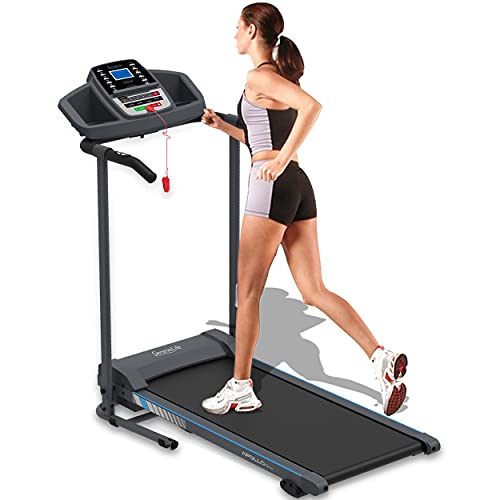What Will Non Electric Treadmill Be Like In 100 Years?

The Rise of Non-Electric Treadmills in the UK: A Sustainable Approach to Home Fitness
In recent years, the fitness industry has seen a significant shift towards sustainability and health-conscious lifestyles. With the increase of environmentally friendly items, non-electric treadmills have gotten considerable appeal among physical fitness lovers and casual users alike. These treadmills provide a special blend of sustainability, efficiency, and price, making them an excellent option for those looking to get fit without the large cost of electricity-consuming makers. This short article will explore the functions, advantages, and options readily available in the UK market for non-electric treadmills.
Comprehending Non-Electric Treadmills
Non-electric treadmills, often described as manual or self-powered treadmills, run without a source of power. Rather, they rely entirely on the user's motion to drive the treadmill belt. They can be a great addition to home health clubs, especially for those aiming to prevent high electricity costs or seeking to decrease their carbon footprint.
Types of Non-Electric Treadmills
There are numerous kinds of non-electric treadmills available in the market. Here's a succinct table that breaks down the primary types you may encounter:
| Type | Description | Pros | Cons |
|---|---|---|---|
| Wood Treadmills | Made from top quality wood, using a classic aesthetic. | Long lasting, visual appeal | Heavier and can be more costly |
| Steel Treadmills | Strong and robust, generally made from steel or strong metals. | Long-lasting, steady | Much heavier, might have a higher carbon footprint |
| Foldable Treadmills | Easy to store and transport, often with a light-weight frame. | Space-saving, portable | May compromise on stability and durability |
| Incline Treadmills | Offers built in incline functions for added strength. | Great for different exercises | Often heavier and pricier |
Key Features of Non-Electric Treadmills
- User-Powered Movement: The most distinct function is that they are powered directly by the user, providing a natural running simulation.
- Adjustable Incline: Many designs allow users to change the incline by hand, offering a more difficult exercise.
- Area Efficiency: Treadmills can be developed to fold or compact quickly for storage, fitting homes with minimal space.
- Toughness: Non-electric treadmills are typically constructed from robust materials, promising a long life expectancy with regular use.
Benefits of Non-Electric Treadmills
Non-electric treadmills included various advantages that make them an attractive option:
- Cost-Effective: By removing the requirement for an electrical outlet, users can conserve on electricity expenses and utilize their machines anywhere.
- Sustainable Workout: These treadmills symbolize a greener approach to physical fitness, adding to a lower ecological impact.
- Natural Running Mechanics: The manual aspect engages core muscles better and helps improve versatility and stability.
- Lower Maintenance Costs: Being mechanical, there is less that can go incorrect compared to their electric counterparts, resulting in minimized upkeep needs.
Aspects to Consider When Choosing a Non-Electric Treadmill
While choosing a non-electric treadmill, a potential purchaser should consider several elements:
- Weight Capacity: Ensure that the treadmill can accommodate the user's weight.
- Runner's Comfort: Look for functions like adjustable belt resistance and cushioning to improve comfort.
- Mobility: If space is a concern, choose a model that can be easily folded or carried.
- Price Range: Establish a budget plan as costs can vary commonly based on materials and features.
Popular Models in the UK
The UK market offers a variety of non-electric treadmills with numerous functions and price points. Here are some well-regarded options:
| Model | Price Range | Secret Features | User Ratings |
|---|---|---|---|
| Fitness Reality TR3000i | ₤ 300 - ₤ 450 | High weight capability, foldable, and manual incline | 4.5/ 5 |
| Kettler Track S | ₤ 400 - ₤ 600 | Adjustable incline, compact style | 4.6/ 5 |
| Smarter Fitness SMA7 in your home | ₤ 250 - ₤ 400 | Made from wood, aesthetic design, extremely durable | 4.4/ 5 |
| ProForm Performance 400i | ₤ 300 - ₤ 500 | User-friendly user interface, good develop quality | 4.3/ 5 |
Often Asked Questions (FAQ)
Q1: Can I get an excellent workout on a non-electric treadmill?
A1: Yes! Non-electric treadmills engage your muscles more than electric designs due to their manual nature, providing an outstanding cardiovascular workout.
Q2: Are non-electric treadmills more economical than electric ones?
A2: Generally, they are more budget friendly since they don't count on electrical performance, triggering less maintenance and operation expenses.
Q3: How do I preserve a non-electric treadmill?
A3: Maintenance is simple. Keep www.hometreadmills.uk , lubricate the belt if essential, and regularly inspect for any loose bolts or parts.
Q4: What is the weight limitation for non-electric treadmills?
A4: Most designs support a weight range between 100kg and 180kg. It is advisable to inspect specific requirements.
Q5: Is working on a non-electric treadmill harder than on an electric one?
A5: It can be, as users must generate all motion. Nevertheless, this can cause much better endurance and muscle engagement with time.
As the UK turns its focus towards sustainable living and healthier way of lives, non-electric treadmills provide a testimony to this changing landscape. With their affordability and eco-friendly leanings, these devices represent a considerable shift in how individuals see fitness in your home. By considering the benefits and important aspects described in this post, fitness enthusiasts can make educated decisions that cater not just to their physical fitness needs but also to their ecological suitables.
Whether it's for casual walking or intense running, buying a non-electric treadmill can be a step towards a healthier and more sustainable way of life.

